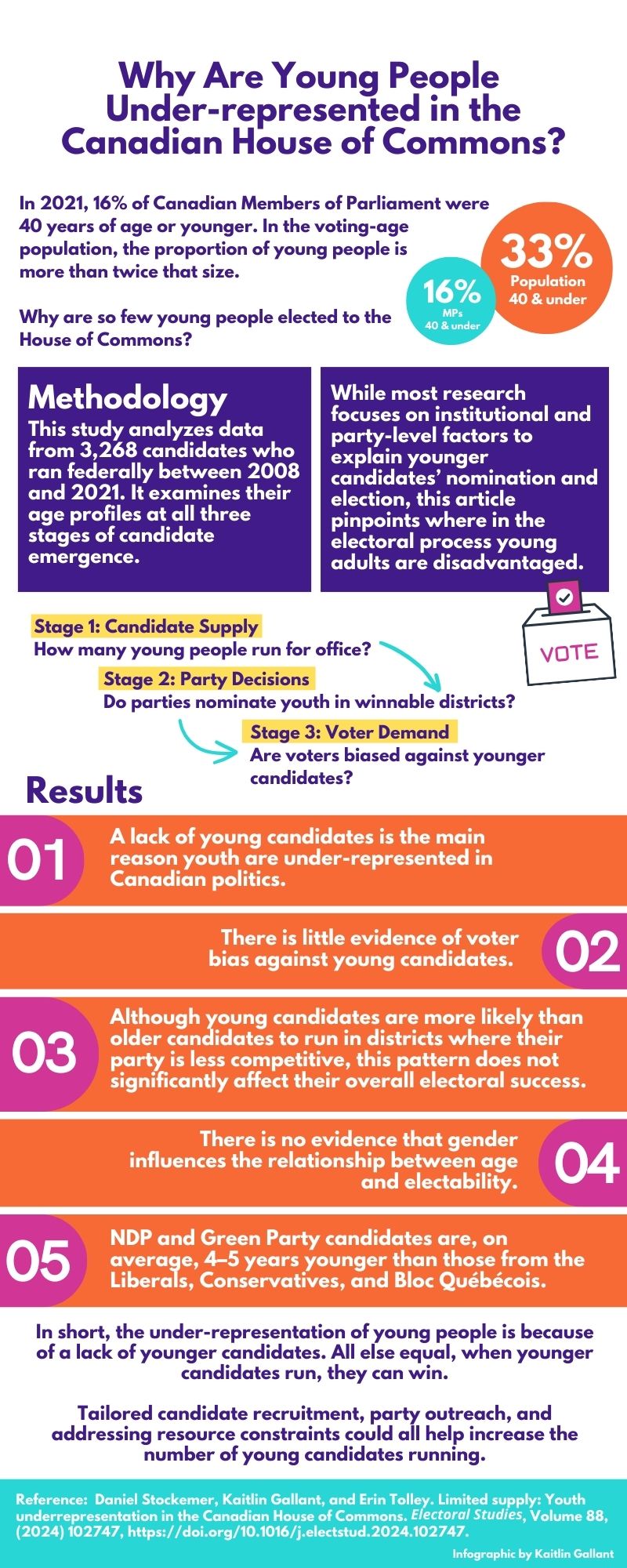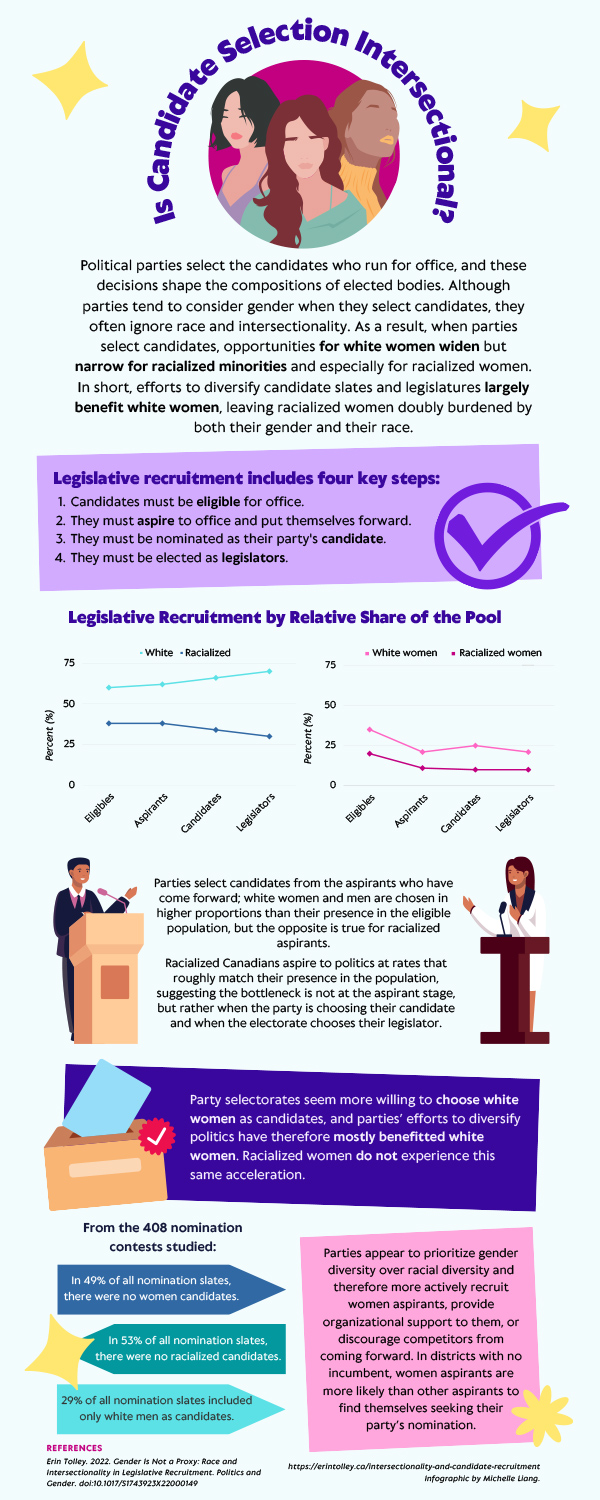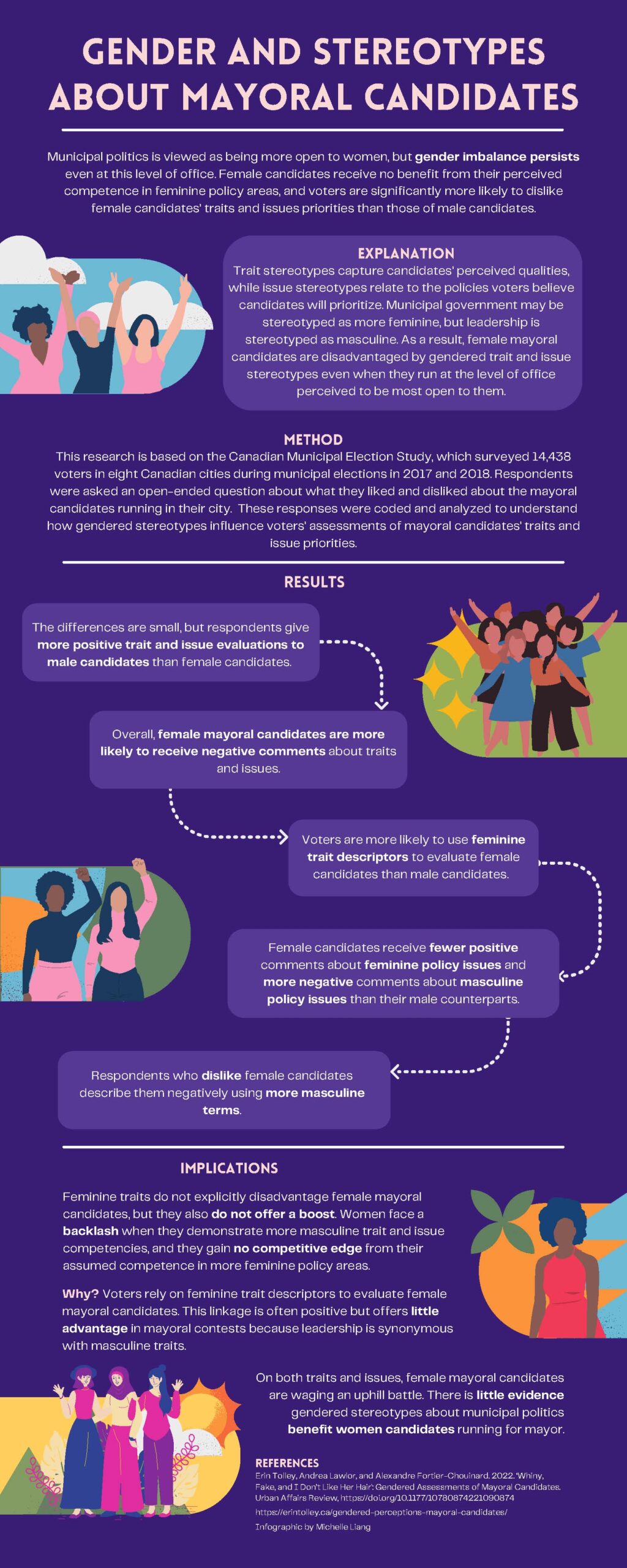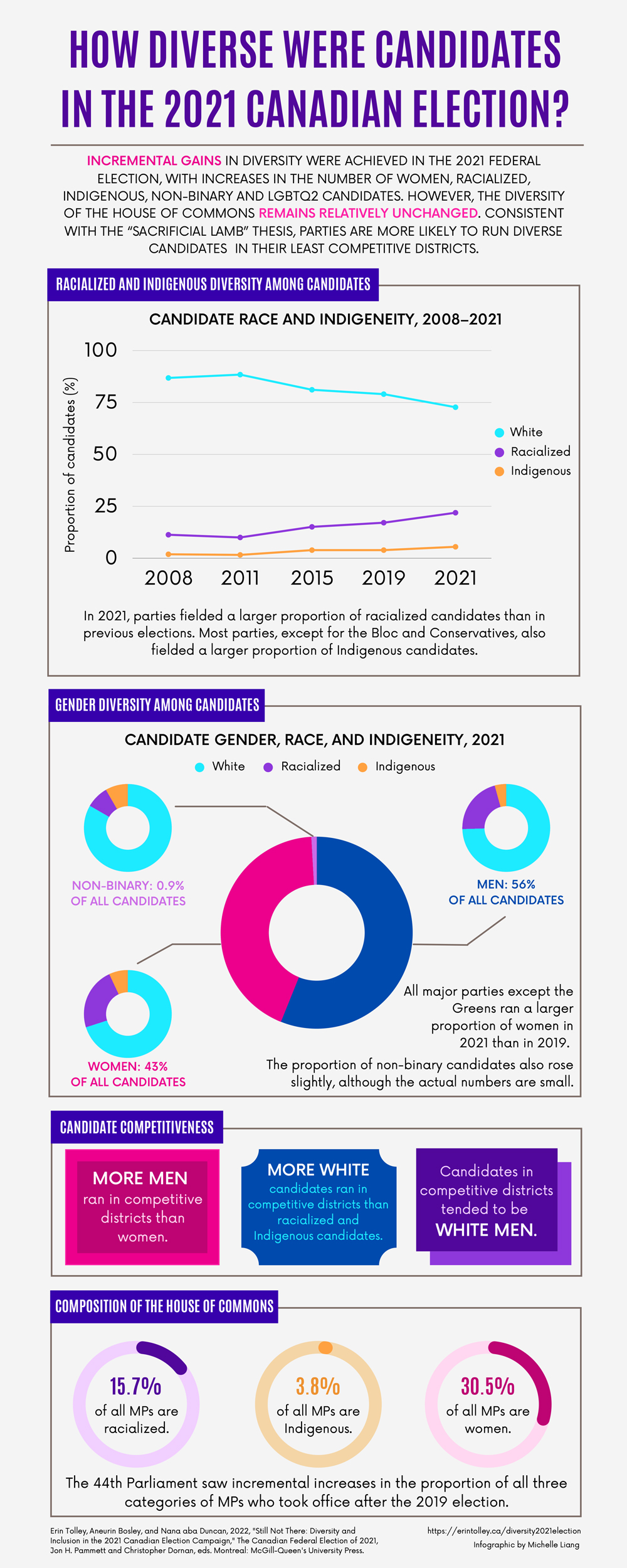Hezel Ulona
Erin Tolley
Hezel Ulona is a fourth-year undergraduate student in the Bachelor of Public Affairs and Policy Management program at Carleton University, specializing in Rights and Human Development with a minor in Women and Gender Studies. Her academic interests lie at the intersection of development policy, disaggregated data collection, and equity-focused governance. Hezel is a recipient of the Abel Mengistab Memorial Scholarship for outstanding Black students committed to social justice and the CASG Academic Achievement and Community Involvement Scholarship. She is also a Social Sciences and Humanities Research Council (SSHRC) Undergraduate Student Research Award recipient and is working with Dr. Erin Tolley on research projects related to race and politics.

Chantel Jeremiah
Erin Tolley
Chantel conducted interviews for the Black Canadians in Electoral Politics project and gathered data for a project on parliamentarians’ representational strategies. She is a PhD student in Sociology at the University of Toronto.

Britney Andrews
Erin Tolley
Britney Andrews conducted interviews and analysis for the Black Canadians in Electoral Politics project. She is a PhD student at York University.

Youth in politics
Canadians under the age of 40 make up 33 percent of the Canadian population, but just 16 percent of Members of Parliament. Why are youth so underrepresented in politics? Drawing on an extensive dataset of more than 3000 candidates in Canadian federal elections from 2008 to 2021, we document the presence of young people in the candidate pool and parliament to understand the stage at which their underrepresentation begins. We show that young peoples’ numerical underrepresentation is not a function of voter discrimination. Rather, it is because only a small number of young candidates come forward.
We find that limited youth representation in the candidate pool translates into low representation rates in parliament. These results suggest that efforts to ameliorate youth underrepresentation in politics must be attentive to supply-side issues, including party gatekeeping, resource constraints, political ambition, and the motivations for running for office.
Citation:
Daniel Stockemer, Kaitlin Gallant, and Erin Tolley. 2024. Limited Supply: Youth Underrepresentation in the Canadian House of Commons. Electoral Studies 88: 102747. https://doi.org/10.1016/j.electstud.2024.102747
Racist campaign speech and political engagement
Explicit racism in political campaigns is on the rise. Some research suggests policy threat and government discrimination are correlated with increased political participation, while others find evidence of alienation and withdrawal. However, little direct causal evidence exists on the effects of inflammatory campaign rhetoric on marginalized groups. Using a survey experiment of Latinx Americans, we investigate how exposure to racist political attacks shapes a targeted group’s political engagement. We find that randomized exposure to a stylized campaign video critical of immigrants or Latinx people increases vote intention and enthusiasm, but does not affect other political actions, such as donating and protesting. Increased participation effects are concentrated among respondents who report strong Latino identity and low political interest. These findings highlight the resilience of minority communities who respond to political attacks with political mobilization, not avoidance. Together, this causal evidence complements previous observational work and shows that mobilization can result not just from policy threat and state action, but also from campaign rhetoric.
Citation:
Randy Besco, Sergio Garcia-Rios, Julius Lagodny, Nazita Lajevardi, Kassra Oskooii, and Erin Tolley. 2022. Fight Not Flight: The Effects of Explicit Racism on Minority Political Engagement. Electoral Studies 80, https://doi.org/10.1016/j.electstud.2022.102515.doi.org
Intersectionality and candidate recruitment
Election to office is shaped by a series of decisions made by prospective candidates, parties, and voters. These choices determine who emerges and is ultimately selected. Each decision point either expands or limits the possibilities for more diverse representation. Studies of women candidates have established an important theoretical and empirical basis for understanding legislative recruitment. This study asks how these patterns differ when race and intersectionality are integrated into the analyses. Focusing on more than 800 political aspirants in Canada, I show that legislative recruitment varies by race, gender, and their intersections. Whereas white and racialized women aspire to political office at roughly the same rates, their experiences diverge at the point of party selection. Political parties’ efforts to diversify politics have mostly benefitted white women, and a greater emphasis on the electoral trajectories of racialized women and men is needed.
Citation:
Erin Tolley. 2022. “Gender Is Not a Proxy: Race and Intersectionality in Candidate Recruitment.” FirstView at Politics & Gender. doi:10.1017/S1743923X22000149
Gendered perceptions of mayoral candidates
Municipal mayoral elections present a compelling puzzle: what happens when gendered stereotypes about level of government conflict with those about type of office? Although local politics is viewed as communal and more woman-friendly, the mayoral office is a prominent, prestigious position of political leadership that voters may perceive as more masculine. We intervene by analyzing open-ended comments about 32 mayoral candidates from a survey of 14,438 municipal electors in eight Canadian cities. We argue gendered trait and issue stereotypes are embedded in voters’ assessments of mayoral candidates. We find no evidence that female candidates benefit from their perceived competence in local policy issues, and they simultaneously experience backlash when they display the traits typically associated with strong leaders. We conclude that even at the level of government frequently thought of as more open to women, female mayoral candidates are disadvantaged by an enduring association between masculinity and political leadership.
Citation:
Erin Tolley, Andrea Lawlor, and Alexandre Fortier-Chouinard. Forthcoming. “‘Whiny, Fake, and I Don’t Like Her Hair’: Gendered Assessments of Mayoral Candidates.” OnlineFirst at Urban Affairs Review. https://doi.org/10.1177%2F10780874221090874
Who ran and won in 2021?
How was diversity represented in the 2021 Canadian election? In this chapter, Aneurin Bosley, Nana aba Duncan and I document three components of the campaign: who ran, what parties promised, and how the media covered it. We find that while incremental gains were made in the diversity of candidate slates, the demographic composition of the House of Commons remains relatively unchanged. Although there were more “diverse” candidates on the ballot, these contenders were more likely to be nominated in their parties’ least competitive districts and thus faced an uphill battle.
We suggest that while platforms include “diversity” content, parties’ integration of issues related to equity, racism, and multiculturalism were frequently generic, and sometimes performative. We argue that parties have struggled to move beyond performativity in their commitment to equity, diversity and inclusion. Moreover, although issues related to immigration and race received media attention in the 2015 and 2019 campaigns, they largely fell off the radar in 2021.
Citation:
Erin Tolley, Aneurin Bosley, and Nana aba Duncan, 2022, “Still Not There: Diversity and Inclusion in the 2021 Canadian Election Campaign,” The Canadian Federal Election of 2021, Jon H. Pammett and Christopher Dornan, eds. Montreal: McGill-Queen’s University Press.
Women, power and political representation
Kamala Harris. Jacinda Ardern. Annamie Paul. In Canada and abroad, women are blazing new trails as political leaders. In Women, Power, and Political Representation, a new volume that I edited with Roosmarijn de Geus, Elizabeth Goodyear-Grant and Peter Loewen, contributors examine the contours and challenges of women’s political representation. Published by University of Toronto Press, the book includes 18 chapters, written in an accessible format that is ideal for students and journalists.
The Hill Times has named it one of the Best Books of 2021, and Rosie Campbell, Professor Politics and Director of the Global Institute for Women’s Leadership at King’s College, London calls it “comprehensive account of the state of women’s political presence . . . that showcases cutting-edge research regarding women’s under-representation from diverse perspectives.”
Citation:
Roosmarijn de Geus, Erin Tolley, Elizabeth Goodyear-Grant and Peter John Loewen, eds. 2021. Women, Power and Political Representation: Canadian and Comparative Perspectives. Toronto: University of Toronto Press.

How diverse is Canadian politics?
Much has been written about Canada’s diversity, but is that diversity reflected in our elected institutions? Our new dataset suggests not really. I worked with Marc André Bodet, Melanee Thomas, and Anna Johnson to create the first publicly available district-level dataset that tracks candidate gender, race, Indigenous background, age and occupation for federal elections from 2008-2019. It includes information on more than 4,500 candidates who ran for the major federal parties, and also has variables on incumbency, electoral outcome, and district competitiveness.
The dataset can be downloaded and used to answer a variety of questions about diversity in Canadian politics. It can also be combined with other datasets to understand the relationship between diversity, media coverage, political donations, and representation.
Citation
Anna Elizabeth Johnson, Erin Tolley, Melanee Thomas, Marc André Bodet (2021) “A New Dataset on the Demographics of Canadian Federal Election Candidates,” Canadian Journal of Political Science 54(30: 717-725. Journal page Dataverse











